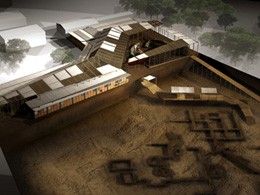STUDENTS PROJECTS
PROJECTS2012
Name: Marina Karamali
Tutors: Arthur Mamou-Mani, Toby Burgess
University of Westminster, School of Architecture and the Built Environment
Date of Presentation: 21 May 2012
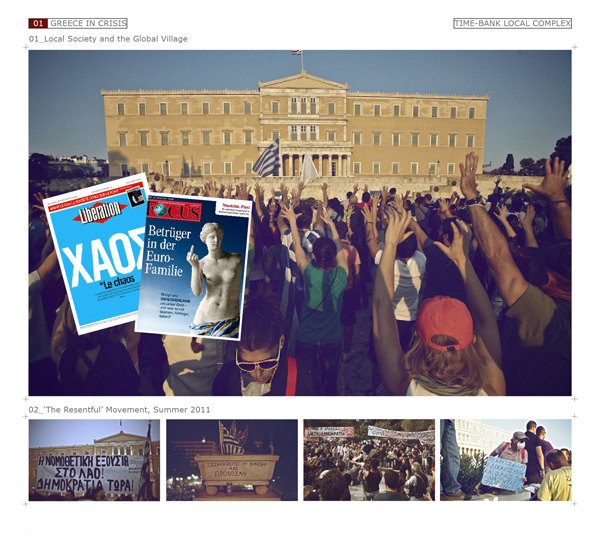
The 'Resentful Movement' swept through Greek cities in the summer of 2011, as international media depicted an extremely unfavorable picture of Greece.
The 'Time-Bank' thesis project focuses on the concept of alternative social and economic models in relation to lightweight structures and individuals' participation.
The current economic and social crisis that engulfs Greece, which simultaneously affects the local society and the global village, was the main area of investigation. The aim was to surpass the images of violent protesting that are being regularly reproduced by the media and focus on how people react to the crisis in their everyday life.
It was during the summer of 2011 that the 'Resentful Movement' was formed, where people flooded the main squares of Greek cities and tried to express their disagreement to the political handling of the crisis, aiming for direct democracy.
Through the 'Resentful Movement' the Greek Time-Bank was formed. The Time-Bank is a community where people exchange services with the transactional unit being time. Every person and every service, whether manual or mental, are equally valued according to the time required for their completion.
Both the character of the Time-Bank organization and the context of the crisis inform the architectural proposal which aims at a low-cost and self-assembling model. Scavenged pallets and excavated earth from the adjacent archaeological site of Plato's Academy are used as building materials along with pre-fabricated wooden beams and planks.
The Agora space of ancient Greek cities has been analyzed in Space Syntax terms in order to inform the new proposal. The Agora space was normally the largest open convex space of the polis and is considered as the locus of the foundation of democracy. The Agora hosted the combined political, religious and commercial functions of the city-state.
The building program includes an administration space, a café/restaurant, the service exchange units and an open-air theater. The design proposes a central canopy 'stoa' colonnade, underneath which the modular units will emerge, and a main courtyard. The construction on site is not a 'one-off' scheme, but will follow a gradual addition as long as materials and members will become available. The modular huts and the canopy have been developed according to standard sizes of wood and members are asked to set up the structures themselves, following a user-friendly manual.
The design of the main canopy includes some tent and some pergola covered areas, providing shading to the spaces underneath. The design of the theater is constructed by pallets and earth, while the facades of the complex aim at breaking down the linearity of the scheme and bringing in some of the protesting character to the architectural proposal.
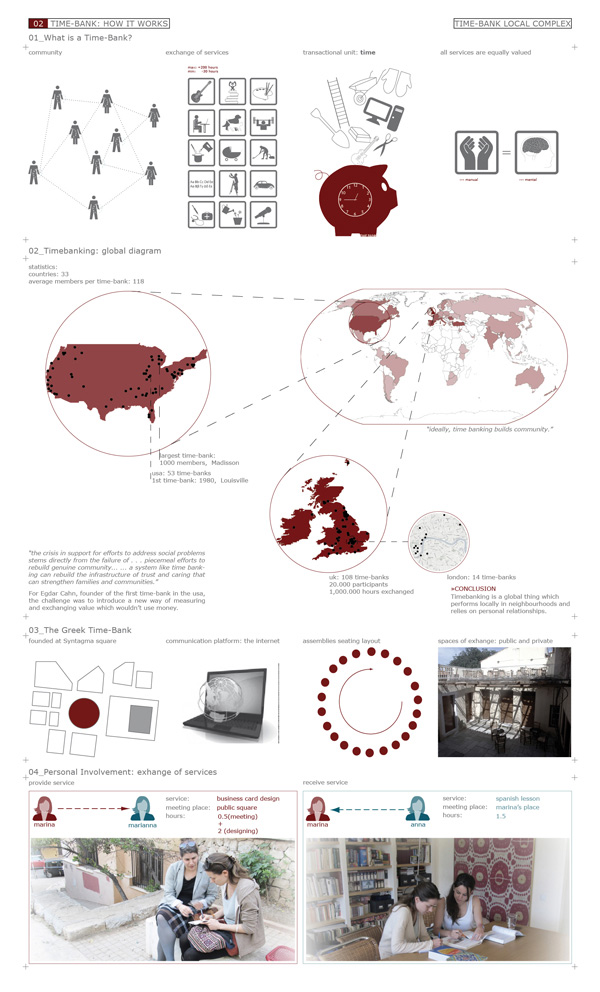
Out of the 'Resentful Movement' the Greek Τime-Bank was generated. The Time-Bank is a community where people exchange services with the transactional unit being time. Every person and every service are equally valued. The Greek Time-Bank has 800 members who communicate through a blog but there is not yet a building to host their activities.
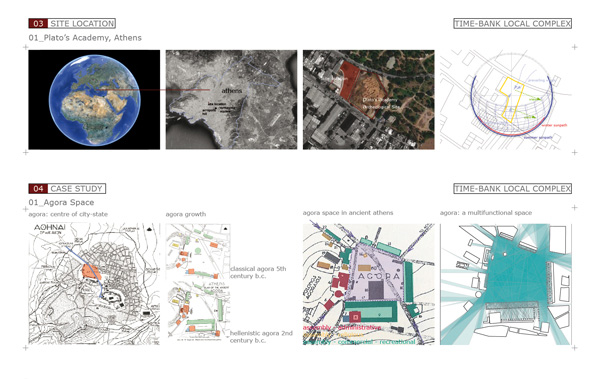
The site next to Plato's Academy archaeological site in central Athens is chosen in order to host the first Time-Bank local complex. The proposed architecture is not determined by any specific site and can be adapted to any location through some sets of rules. As a case study the space of Agora of the ancient city-states was analyzed in order to inform the new proposal. The Agora space is considered to be the place where Democracy was first born.
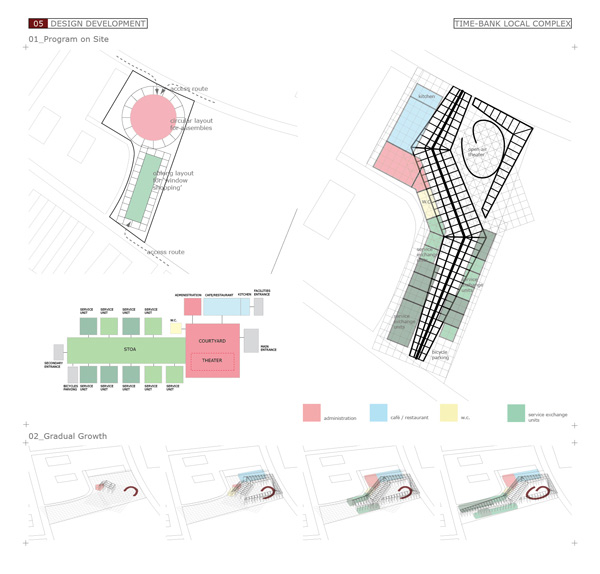
The complex is set in a circular layout around an open courtyard, where assemblies may take place. Administration, the café/restaurant and the theater are to be set around the open courtyard. A more oblong layout hosts the service exchange units, based on the 'window shopping' theory which aims to attract more visitors to participate.The whole scheme is developed with modular units that are constructed on demand, enabling a gradual growth.
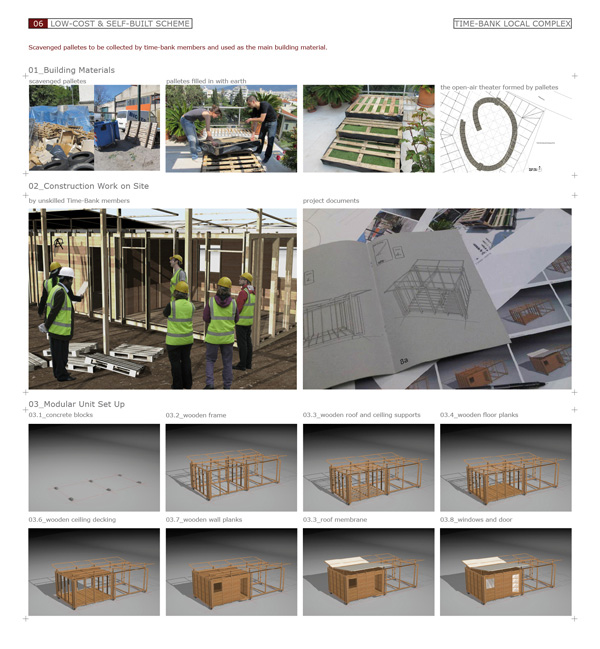
The construction of the whole scheme is developed by unskilled members of the Time-Bank. The members are asked to collect palettes from the area around and use them as a building material. Purchased wood on standard sizes is also used. A manual is provided in order to follow easy steps on assembling the materials.
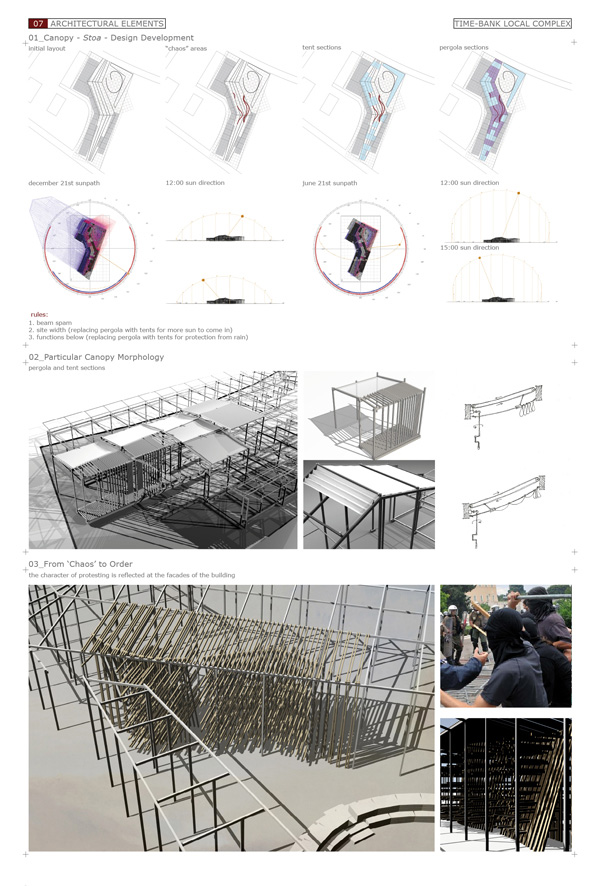
A canopy plays the role of the 'stoa', where modular units are set beneath. The morphology of the canopy includes tent and pergola areas, arranged according to the functions of the units underneath. Moreover, the facades of the building aim to translate the 'chaos' of protesting into order, and give a unique architectural quality to the spaces of the complex.
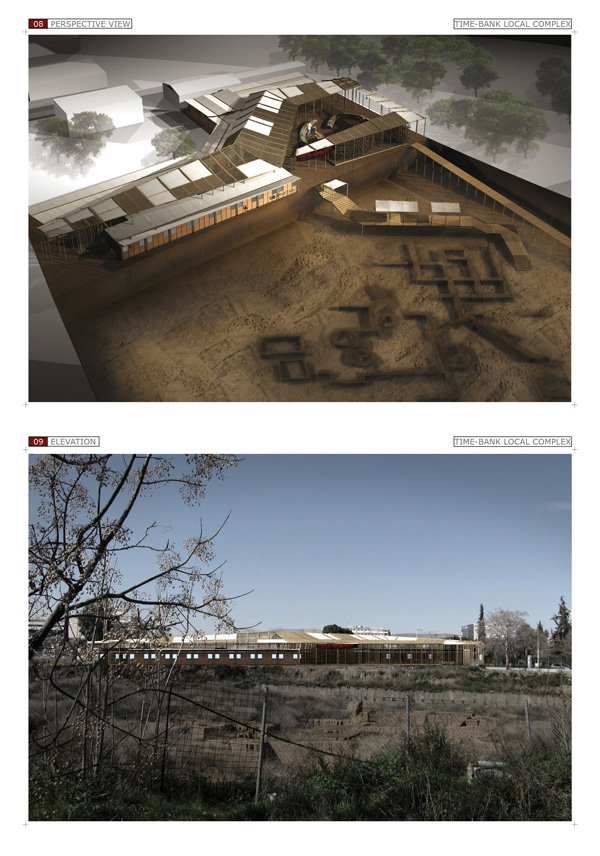
Perspective view and elevation of the completed building, with ramps to the archaeological site of Plato's Academy. Members of the Time-Bank will exchange labor for use of the site. As the site is a property of the Archeological Department, members will provide services to the excavations and in return they will be able to set up their complex at the site.
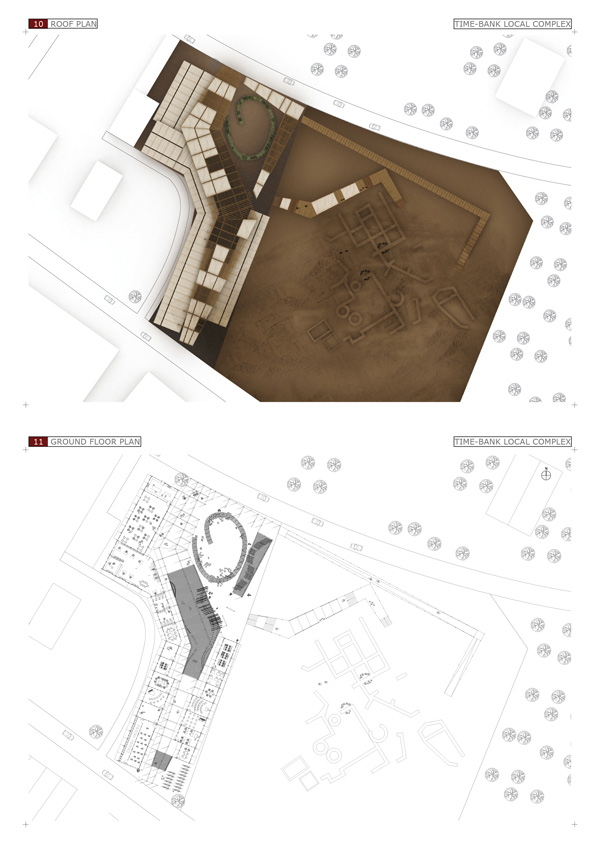
Roof plan of the complex and ground floor plan with service exchange taking place at the modular units.
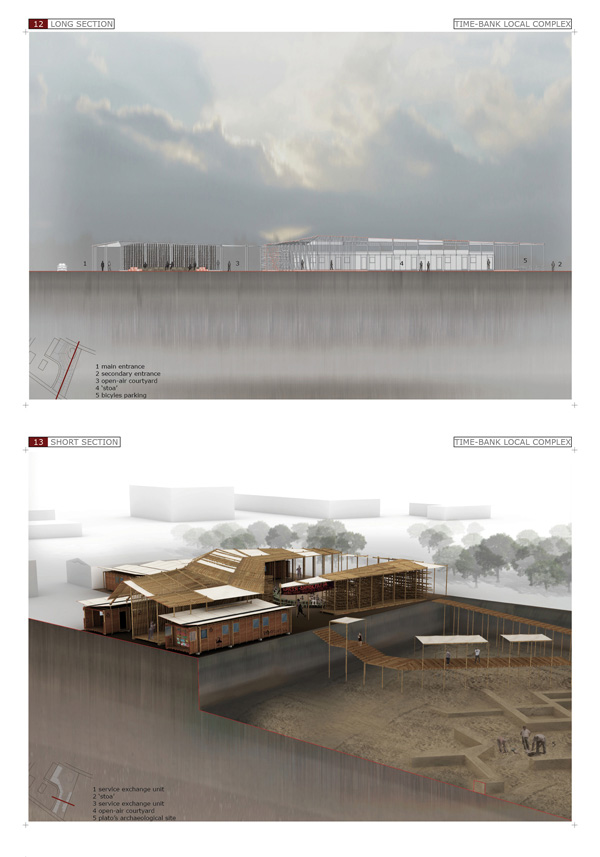
Long and Short sections.
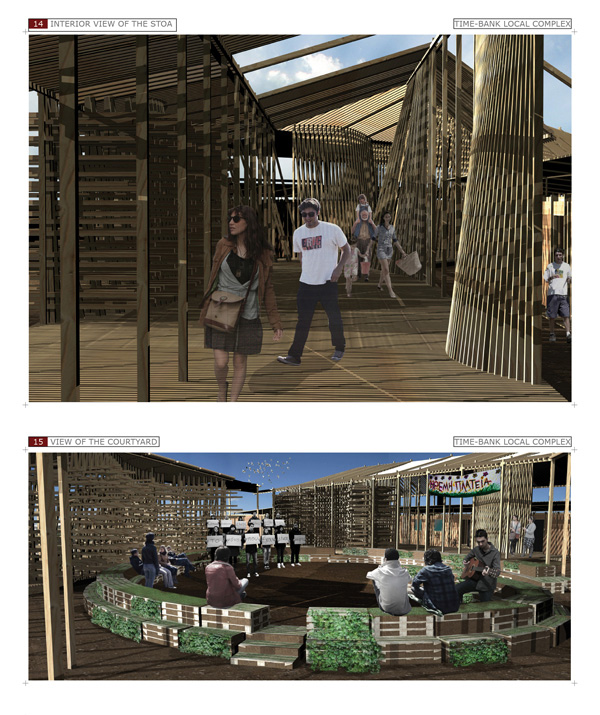
Interior view of the 'stoa' and of the open courtyard, which is used for performances, meetings and assemblies.
Related articles:
- Theaterhaus Jena Inflatable Pavilion ( 25 September, 2009 )
- The Wall paper house offers cheap dry home for poor and displaced ( 10 February, 2009 )
- Norway-Powered by Nature ( 26 September, 2011 )
- Transportable unit of medical support for central Africa ( 02 February, 2011 )
- Beehive housing ( 30 October, 2010 )
- Container (s) ( 17 April, 2012 )
- Urban Camping. Athens ( 28 April, 2013 )
- b84 ( 15 October, 2013 )
- TV ( 22 January, 2014 )
- Multiplying the ''Joint'' ( 06 March, 2015 )
- Designing for the homeless ( 26 March, 2015 )
- T.E.F.K. House ( 30 March, 2015 )
